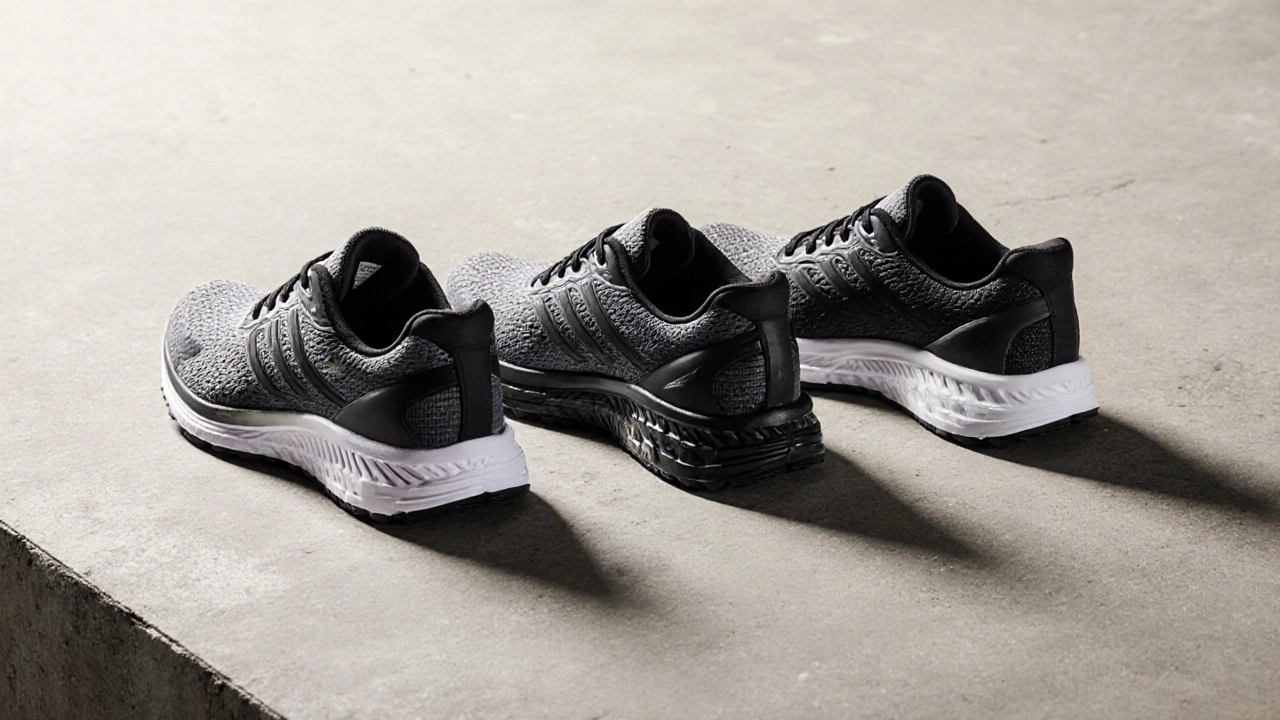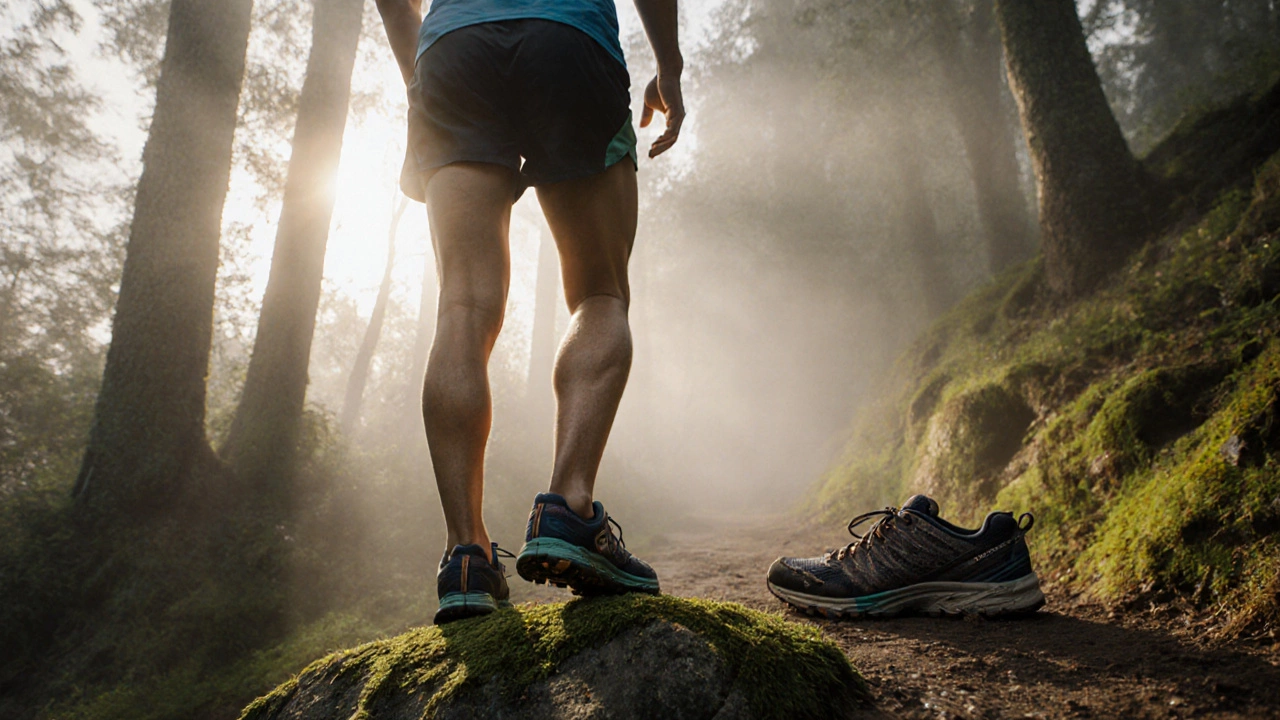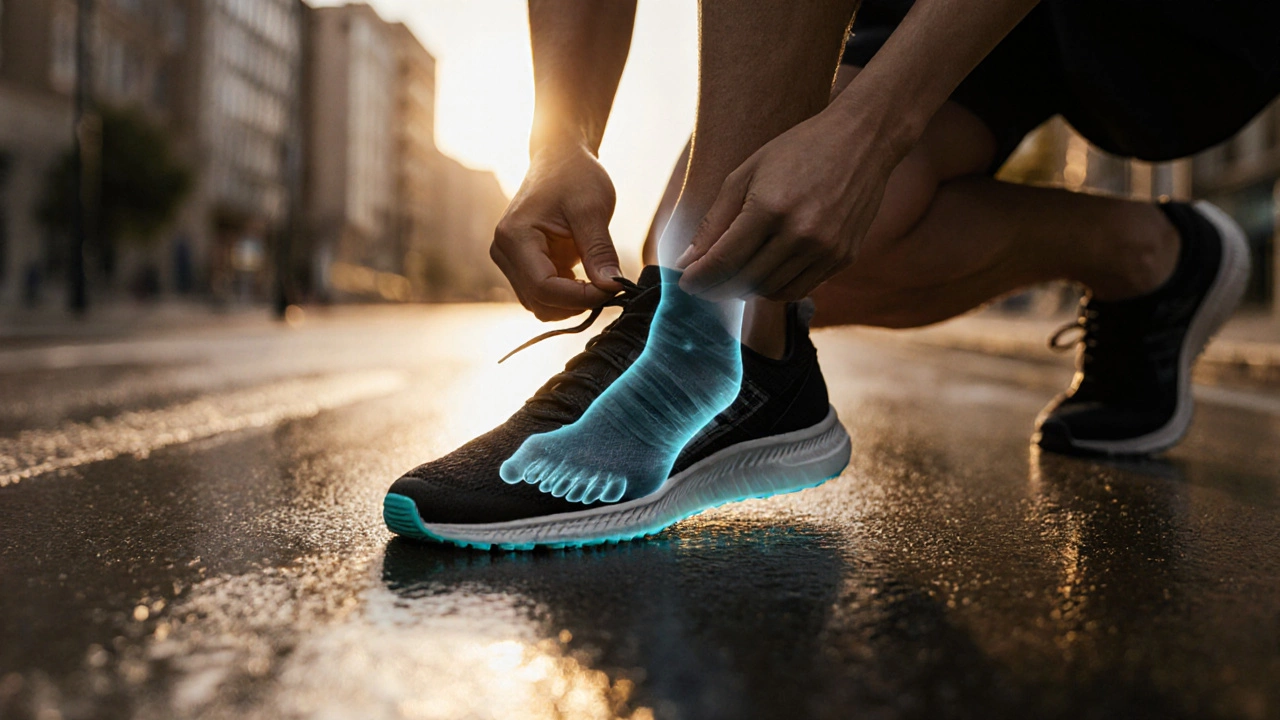Ever wondered if the running shoes you lace up actually affect your performance or injury risk? The short answer is yes - the right pair can make your runs smoother, quicker, and safer, while the wrong pair can turn a pleasant jog into a painful ordeal. Below we’ll break down why shoe choice matters, how to match shoes to your foot, and what to look for when you shop.
TL;DR - Quick Takeaways
- Identify your foot type (neutral, overpronator, underpronator) before you buy.
- Pick a shoe category that supports that foot type - neutral, stability, or motion‑control.
- Check key specs: heel drop, cushioning level, weight, and outsole grip for your terrain.
- Fit matters more than brand; a snug midfoot and enough toe room are essential.
- Replace shoes every 300‑500 km or when you feel a loss of cushioning.
Understanding Your Foot Mechanics
Before you stare at endless shoe shelves, get a clear picture of how your foot moves. Most runners fall into three categories:
- Neutral - the foot rolls inward just enough to absorb shock.
- Overpronator - the foot rolls inward excessively, stressing the arch.
- Underpronator (or supinator) - the foot doesn’t roll inward enough, leaving the outer edge to take the hit.
Most specialty running stores offer a simple gait analysis: you’ll step on a treadmill while a video records your motion. You can also get a cheap self‑test at home by wetting your foot and stepping on a paper towel; the shape of the imprint hints at arch height, which correlates with pronation.
Key Shoe Categories and Their Roles
Once you know your foot type, match it to a shoe category. Each category is designed to address a specific gait pattern.
| Category | Ideal Foot Type | Primary Feature | Cushioning Level | Typical Heel Drop (mm) |
|---|---|---|---|---|
| Neutral Shoe | Neutral | Balanced support | Mid‑to‑high | 8‑10 |
| Stability Shoe | Overpronator | Medial post or firmer midsole | Mid | 8‑10 |
| Motion‑Control Shoe | Severe overpronator | Maximum arch support, often a dual‑density platform | Low‑mid | 10‑12 |
Notice that the heel drop - the height difference between heel and forefoot - stays around 8‑12mm for most road shoes. Trail models may vary, and minimalist shoes drop below 4mm.
Essential Specs to Scan on Every Pair
- Heel Drop: Lower drops promote a more natural foot strike but can increase calf strain for newcomers.
- Cushioning Material: EVA foam offers lightweight comfort; newer TPU blends or proprietary gels can add durability.
- Shoe Weight: Racing shoes <250g; training shoes 260‑300g. Heavier shoes often mean more protection.
- Outsole Grip: Rubber compounds differ for road (smooth) vs. trail (lugs). Choose based on your typical surface.
- Upper Construction: Mesh provides breathability; engineered knit offers a sock‑like fit; overlays add support.
These specs interact with your foot mechanics. For example, a heavy cushion shoe with a high drop can feel like you’re walking on clouds, but it may discourage a natural cadence for fast tempo runs.

How to Test Fit - The 5‑Minute Shoe Check
Even the best‑selling model won’t help if it doesn’t fit your foot. Here’s a quick at‑home test:
- Put on the socks you usually wear for running.
- Slide your foot in and lace up - the heel should sit snugly without lifting.
- Stand upright; you should feel a finger‑width of space between the longest toe and the front of the shoe.
- Take a short jog around the house or on a treadmill. Pay attention to any rubbing or pressure spots.
- After the jog, remove the shoe. If your foot feels cramped or you notice excess movement in the arch area, try a different width or model.
A well‑fitted shoe feels like an extension of your foot, not a straitjacket.
Buying Checklist - Don’t Leave the Store Without These Answers
- What is my foot’s pronation pattern?
- Do I need extra arch support (stability) or a softer ride (neutral)?
- What terrain will I most often run on - road, treadmill, trail?
- What is my typical weekly mileage? Higher mileage calls for more durable outsole.
- What is my budget range? Expect to spend $120‑$180 for a quality training shoe.
- When was the last time I replaced my old pair? Count kilometers - most shoes last 300‑500km.
Common Myths About Running Shoes
Myth #1: “The more expensive, the better.” Price reflects brand marketing as much as technology. A mid‑range neutral shoe often outperforms a premium model for a beginner.
Myth #2: “I need to wear the same shoes for every run.” Trail shoes have lugs that can wear quickly on pavement; road shoes can feel slippery on loose gravel.
Myth #3: “Minimalist shoes are the healthiest choice.” Dropping heel height too fast can lead to achilles pain. Transition gradually if you go low‑drop.

Mini FAQ - Your Follow‑Up Questions Answered
Frequently Asked Questions
Do I really need a stability shoe if I overpronate?
Yes. Stability shoes have a firmer medial post that prevents the foot from rolling too far inward, reducing stress on the knees and hips.
How often should I replace my running shoes?
Most experts recommend swapping them out after 300‑500 kilometres, or when you notice a loss of cushioning, uneven wear on the outsole, or new aches after runs.
Is a lower heel drop always better for speed?
Lower drop can encourage a quicker turnover, but only if your calf muscles and Achilles are conditioned. Jump straight to a 4mm drop and you risk injury.
Can I use the same shoes for road and trail runs?
Occasionally, yes. However, trail shoes have sturdier uppers and deeper lugs that wear faster on pavement, while road shoes can feel unstable on loose dirt.
What’s the difference between cushioning and support?
Cushioning absorbs impact - think of a pillow. Support guides foot motion - like a handrail. Both are needed, but the balance depends on your pronation.
Next Steps - Put Your New Knowledge to Work
1. Take a quick gait test at a local store or use an online video guide to pinpoint your pronation.
2. Narrow down to one shoe category that matches your foot type.
3. Use the buying checklist to filter models within your budget.
4. Try the 5‑minute fit test before committing to a purchase.
5. Track mileage and replace when the cushion wears out - your body will thank you.
Remember, the right pair isn’t a one‑size‑fits‑all. It’s the shoe that respects how your foot naturally moves. With this roadmap, you’ll know exactly what to look for and why it matters.
